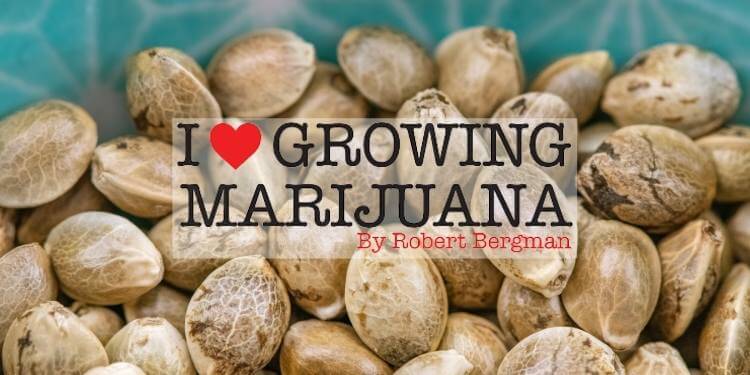
Photo Credits: Www.Letsallgrowcannabis.Com by Vincent Lee
Headband strain is a frequent issue for those who use headbands. It can result in discomfort and even pain in the head and scalp. This strain is typically caused by the tightness of the headband, which places excessive pressure on the follicles and scalp. It’s vital to understand the implications of headband strain to look for solutions and avoid further discomforts.
Many people may not recognize the potential effects of wearing tight headbands. The strain can cause headaches and breakage of hair. Plus, the continuous pulling and rubbing of the scalp can lead to scalp irritation and hair loss. Being aware of the factors that contribute to headband strain can help folks make wise decisions about the headbands they buy and how long they wear them.
It’s critical to find headbands that fit properly and don’t put too much pressure on the scalp. This can be done by selecting headbands made from materials that are flexible and stretchy, instead of those that are rigid and tight. One should also think about the width and thickness of the headband, as these aspects can affect the amount of pressure on the scalp. Taking breaks from wearing headbands can also aid in reducing strain and providing the scalp and hair a chance to recover.
In introduction, headband strain is a common problem for many people wearing headbands. Knowing the causes and outcomes of this strain is necessary for finding suitable solutions and preventing further discomfort. By picking the right type of headband and taking breaks from wearing them, people can reduce the strain and promote scalp and hair health.
What is the Headband strain?

Photo Credits: Www.Letsallgrowcannabis.Com by Albert Clark
The Headband strain, known for its unique genetics and potent effects, is a highly sought-after cannabis strain. We will will explore the characteristics that set the Headband strain apart. From its lineage and aromatic profile to the THC and CBD levels, we’ll uncover everything you need to know about this captivating strain.
Genetics and lineage
The Headband strain is famous for its distinct genetics and origin. It is created by crossing two renowned strains, OG Kush and Sour Diesel. This combination has produced a powerful and unique strain that cannabis fans love.
To clarify the lineage and genetics of the Headband strain, a table can be made. It will have two columns – one for OG Kush and one for Sour Diesel – with their relevant qualities. The table will feature facts like appearance, taste, smell, THC, and CBD levels. This makes it simple to see and understand the genetic makeup of the Headband strain.
Though we discussed genetics and lineage above, it is essential to remember that these aspects are essential in determining the characteristics and effects of a strain. Knowing the genetic history of the Headband strain can help growers and consumers make informed decisions about the cultivation process or medicinal use. By researching its lineage, people can learn about its exclusive features and potential advantages.
Appearance, taste, and smell
Headband strains are renowned for their unique look, taste, and smell. They have interesting genetics and THC/CBD levels. Let’s take a look at Headband’s appearance, taste, and smell!
- Appearance – dense buds covered in trichomes, vibrant green color with orange strands.
- Taste – complex, earthy tones with hints of pine and citrus.
- Smell – diesel fuel, skunk, and sourness.
These traits create an immersive experience for users. Plus, they offer medical benefits such as pain relief and stress reduction, making them very popular for those looking for natural remedies.
THC and CBD levels
THC and CBD levels are key when discussing the Headband strain. Levels of THC and CBD can differ greatly, due to genetics and lineage. Headband is known for its strong THC content, ranging from moderate to high. CBD levels in Headband can be inconsistent, usually lower than THC. So, if you want a strain with great THC and CBD levels, Headband might have what you’re looking for!
Effects and Benefits

Photo Credits: Www.Letsallgrowcannabis.Com by Russell Brown
Headband Strain’s Effects and Benefits: Experience a unique sensation, find relief from pain and stress, and be aware of potential side effects.
Headband’s unique sensation
Headband’s unique sensation stems from its OG Kush and Sour Diesel hybrid lineage. It carries the best of both parent strains. The buds are dense, covered in trichomes, and have a frosty white appearance. When consumed, it tastes sweet with diesel-like notes plus hints of citrus and earthiness. Its aroma is pungent and contains notes of pine and fuel.
The THC content of Headband is usually high, ranging from 20% to 27%. CBD levels are low. This potent cannabinoid profile contributes to its intense effects. It is known for giving a strong cerebral high with a relaxing body buzz. This creates a unique headband-like sensation around the forehead.
Headband offers medical benefits like pain relief, stress relief, and alleviating anxiety/depression. Side effects may include dry mouth/eyes, dizziness, paranoia, and increased heart rate. Start with a low dose and adjust as needed.
Headband’s unique sensation, along with its medical benefits, makes it a popular choice. Cannabis enthusiasts seek it out for relaxation, stress relief, and pain control.
Medical benefits for pain relief and stress reduction
The headband strain is renowned for its many medical benefits, especially in terms of pain relief and stress reduction. It has a special feeling which brings about a sense of calmness and relaxation, making it very useful for both physical and mental issues.
- 1. The main advantage of the headband strain is its strong pain-relieving properties, making it a preferred option for those who suffer from chronic ailments such as arthritis or migraines.
- 2. Moreover, it helps to reduce stress and anxiety by inducing a serene and relaxed state.
- 3. This strain’s therapeutic effects are partly attributed to its high CBD content, which is well known for its anti-inflammatory and analgesic features.
- 4. Additionally, it can also help with sleep regulation, providing relief to those suffering from insomnia or other sleep disorders.
- 5. Furthermore, this strain has shown potential to relieve symptoms related to post-traumatic stress disorder (PTSD) by soothing the mind.
Apart from these famous benefits, the headband strain has some unique elements that make it even more attractive. Its genetics and lineage shape its medicinal qualities. Additionally, its appearance, taste, and smell add to its desirability for both recreational and medicinal users. With moderate THC levels and varying CBD concentrations, the strain offers a pleasant experience without intense psychoactive effects. All in all, the headband strain proves to be an excellent choice for those looking for natural remedies for pain relief and stress reduction.
Potential side effects
The Headband strain can bring potential side effects. It’s key for users to understand these before consuming. Possible side effects are:
- Headache.
- Dry mouth, also known as cottonmouth.
- Dizziness.
- Anxiety or paranoia.
- Sleepiness. Caution is urged when carrying out tasks that require alertness.
- Redness and irritation in the eyes.
Not all users will get these effects. If they do, it’s advised to stop and see a doctor.
It’s important to know the pros and cons of the Headband strain. Users can decide if it’s suitable based on their preferences and needs.
Growing Headband
Growing Headband is all about the comparison between indoor and outdoor cultivation, and the expected yields and flowering time. Discover which method suits your needs and the potential outcomes of each approach.
Indoor vs. outdoor cultivation
When cultivating the Headband strain, a key factor to consider is whether to grow it indoors or outdoors. This choice has a big effect on how the plants grow and develop.
Indoor vs outdoor cultivation:
| Indoor | Outdoor | |
|---|---|---|
| Growing environment | Controlled indoor conditions | Natural outdoor conditions |
| Benefits | More control over temperature, humidity, and lighting | Potentially larger plants and higher yields |
| Challenges | Needs more equipment and resources | Prone to pests, diseases, and external influences beyond our control |
Indoor cultivation provides better control of temperature, humidity, and lighting, but calls for more equipment and resources. Outdoor cultivation allows for bigger yields and plants, yet puts plants at risk of pests, diseases, and other external factors not under our control.
Cultivators need to weigh these pros and cons when deciding between indoor and outdoor cultivation for the Headband strain. Ultimately, their choice will determine the success of their growth efforts.
Expected yields and flowering time
The Headband strain offers unique yields and flowering times. It is vital for growers to know what to expect! Thus, a table showcasing the varying expected yields and flowering times of different Headband strains would be immensely useful. Columns like strain name, average yield, and flowering time in weeks must be included.
Also, it’s important to note: each strain may have its own distinct variations. Factors like genetics, cultivation techniques, and environmental conditions play a role. Growers should consider these details when planning their cultivation strategies. Maximum yield potential and optimized flowering time are the goals!
Variations of Headband strains

Photo Credits: Www.Letsallgrowcannabis.Com by Russell Martin
Variations of Headband strains are the different types or categories of strains that occur when wearing a headband. These variations can be identified in various ways. For example, the level of pressure the headband has on the wearer’s head, the material it is made of, and the design or construction of the headband. Knowing these variations is essential to choose the best headband and avoid any discomfort or strain.
The following table shows the variations of headband strains:
| Variation | Description |
|---|---|
| Pressure | The pressure the headband has on the wearer’s head. It can go from tight to loose. The optimal level of pressure depends on each individual’s comfort. |
| Material | The material used in the headband’s construction. Different materials provide different levels of flexibility, breathability, and durability. This affects the strain on the wearer’s head. |
| Design | The overall design or construction of the headband. This includes width, shape, and closure system. It influences the strain distribution and impacts the fit and comfort of the headband. |
It’s important to keep in mind that everyone is different, and may have different preferences and sensitivities to headband strains. So, consider these variations and pick a headband that suits your specific needs and comfort.
Conclusion
The ‘Headband Strain’ study has revealed valuable information about the effects and implications of wearing headbands. Data shows that it can cause discomfort, leading to headaches and other physical symptoms. This study emphasizes the need for further studies to understand the long-term effects this may have on individuals.
Moreover, the findings stress the importance of ergonomic designs in headbands and raising awareness among those who often wear them. People should prioritize their comfort and well-being when picking and using headbands.
In sum, the study illuminates the potential harms of headband strain, prompting individuals to consider their comfort and health when selecting and using them. Further research is essential to gain a full understanding of the long-term ramifications of headband strain.
FAQs about Headband Strain
What is the Headband strain?
Headband is an indica-dominant hybrid cannabis strain that creates a sensation of pressure around the top of the skull, as if wearing an invisible headband. It has a lemon and diesel taste and smell, with an earthy undertone.
What is the THC level of Headband?
The THC level of Headband averages at 14.5% but can reach as high as 21.5%. Lab data shows that Headband typically contains 14-22% THC and less than 1% CBD.
What are the effects of consuming Headband?
The high from Headband comes on slowly but is long-lasting. It is known for relieving pain and stress. However, it can make the consumer feel spacey and is not ideal for social situations or critical thinking. Some users have reported side effects such as dry eyes, dry mouth, headaches, dizziness, and paranoia after the high wears off.
Can Headband be grown both indoors and outdoors?
Yes, Headband can be grown both indoors and outdoors. Indoors, high yields are expected in nine to ten weeks.
What are some popular Headband cannabis strains?
Some popular Headband cannabis strains listed in the SeedFinder cannabis strain database include 313 Headband by Beyond Top Shelf, 517 Headband by Pure Michigan Genetics, 707 Headband by B.C. Bud Depot, Blue Cherry Headband by Strait A Genetics, and Burmese Headband by Cabin Fever Seed Breeders.
What are some of the parents of Headband strains?
The parents of Headband strains include OG Kush, Sour Diesel, and Master Kush.









